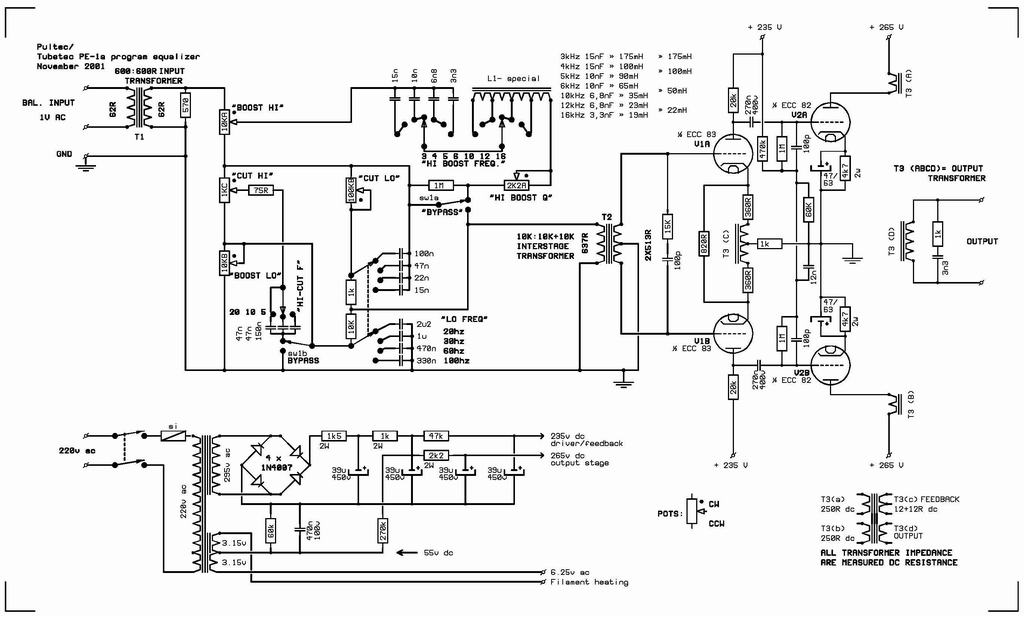pucho812
Well-known member
Was studing this schemo over lunch. I read through the meta's and ran into CJ's topic of adding extra frequencies to a pultec.

I can't locate which Inductor if any value ties to the bass boost or cut as well as which one ties to the high cut. I'm just not seeing it... :?
I see where the treble frequency select connects into L1 so what am I missing :?

I can't locate which Inductor if any value ties to the bass boost or cut as well as which one ties to the high cut. I'm just not seeing it... :?
I see where the treble frequency select connects into L1 so what am I missing :?



